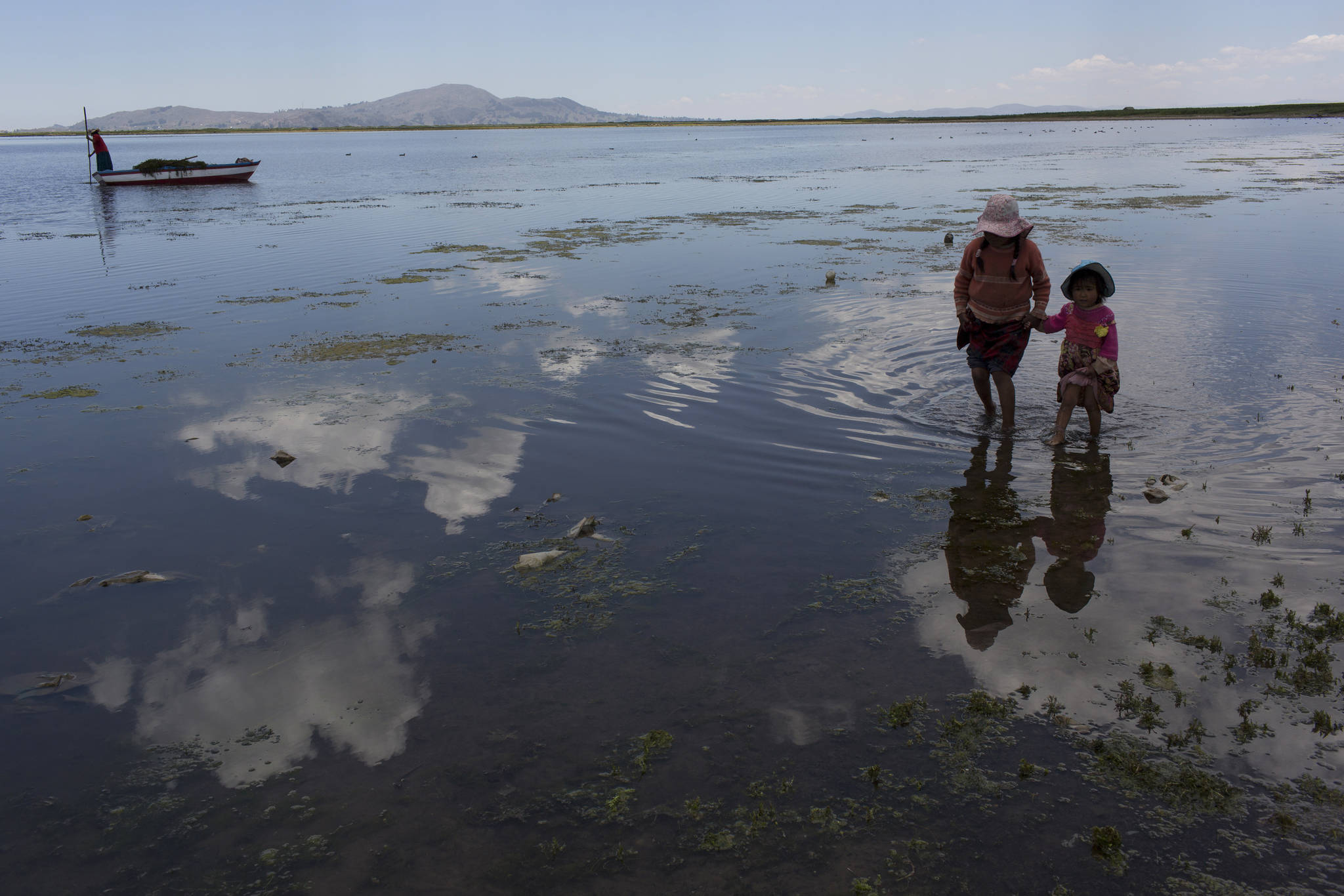LAKE TITICACA, Peru — Tucked between snow-capped mountains, Lake Titicaca was once worshipped by the Incas, who proclaimed its deep blue waters the birthplace of the sun.
These days the shores of South America’s largest lake are littered with dead frogs, discarded paint buckets and bags of soggy trash. Less visible threats lurk in the water itself: toxic levels of lead and mercury.
The steady deterioration of the prized tourist destination has caused a rash of health problems among the 1.3 million people in Peru and Bolivia living near Lake Titicaca’s polluted banks.
Untreated sewage water drains from two dozen nearby cities and illegal gold mines high in the Andes dump up to 15 tons of mercury a year into a river leading to the lake.
“If the frogs could talk they would say, ‘This is killing me,’” said Maruja Inquilla, a local environmental activist who recently showed up at the Puno governor’s house carrying plastic bags filled with hundreds of dead frogs in protest.
Increasing concern about pollution has prompted a series of scientific studies and promises of official action.
The governments of Peru and Bolivia signed a pact in January 2016 to spend more than $500 million to attack the problem, though the details were vague.
A year later, Peru’s new president, Pedro Pablo Kuczynski, pledged to construct 10 treatment plants around the lake, putting the cost at $437 million, “so that the most beautiful lake in the world is the cleanest lake in the world.”
But details of how the plants would be funded remain unclear and promises by politicians dating back two decades have so far gone unfulfilled.
Many of the more than 400,000 tourists who visit Lake Titicaca from Peru each year stop first in Juliaca, a town that produces 200 tons of trash daily, much of it winding up in a river that has turned into a conveyor belt of waste heading into the lake. Hypodermic needles, tires, old shoes and used diapers are scattered among the potato fields that line the giant lake’s shores. An additional 350,000 tourists visit the lake from Bolivia.
A Peruvian government-sponsored study in 2014 found mercury, cadmium, zinc and copper in four types of fish that form part of the local population’s diet at levels higher than those advised for human consumption.
Cellular malformations were detected in the fishes’ blood, said Mario Monroy, lead author of the study and professor at Jorge Tadeo Lozano University in Bogota, Colombia. Monroy likened the state of the fishes’ blood to a thermometer for measuring the health of Lake Titicaca’s waters.
The blue waves that lure travelers also contain lead at levels above international standards, the study found.
Dr. Jane M. Hightower, who specializes in internal medicine at the California Pacific Medical Center in San Francisco and is author of the book “Diagnosis: Mercury: Money, Politics &Poison,” reviewed the study and told The Associated Press that the numbers indicate the amount of mercury consumed by Titicaca residents would be “unacceptable.”
The study suggested officials limit some fish consumption, but inhabitants of the lake area said they weren’t informed about the study or told they could be consuming fish harmful to their health.
Environment Minister Elsa Galarza said her agency plans to make recommendations to residents based on the findings, though Peru’s Production Ministry, which co-financed the study, told The Associated Press in an email that more investigation is required.
Inquilla, the local activist, hasn’t been waiting for more. Donning a wide-brimmed, rainbow-hued hat typical of the indigenous communities that surround the lake, she has been visiting villagers to alert them of the dangers lurking in their food and water.
The green totora reeds and camouflage-colored Titicaca water frogs she once spotted in abundance have thinned in numbers. The frogs have been placed on a “critically endangered” list by the International Union for Conservation of Nature and just 10,000 remain.
In the coastal hamlet of Coata, 23-year-old Maria Avila grew angry as she talked about the lake’s contamination. The mother of a 4-year-old living in an adobe house says she cannot bathe or drink the water without getting severe diarrhea or red spots on her skin.
If she washes a blouse with the lake’s water it turns a green color and if she heats the water to make mate, a tea-like drink with a normally grassy taste, it becomes salty and bitter.
Avila collects rainwater for household use, but when there isn’t rain, she rows a boat 6 miles out from the shore and gathers water in barrels. The water deeper in Lake Titicaca is cleaner than that collected from the banks and can be used to cook, bathe and drink after being boiled.
“My ancestors have lived here more than 500 years. They have never gone through these things,” Avila said.
Like many living on the 13,100-feet high plain surrounding the lake, Avila feels government leaders have neglected them.
In 2011, then-presidential candidate Ollanta Humala promised to solve the contamination and construct water sewage processing plants. He won 79 percent of votes in the Lake Titicaca region but didn’t follow through.
Kuczynski, a former Wall Street banker who lived just 25 miles from the lake as a youth, has made access to clean water one of the priorities of his presidency. In a visit to the lake earlier his year, he characterized the polluted waters “a pigsty.”
Avila said Lake Titicaca’s people refuse to live “like pigs and streets dogs.”
“That’s not who we are,” she said.

